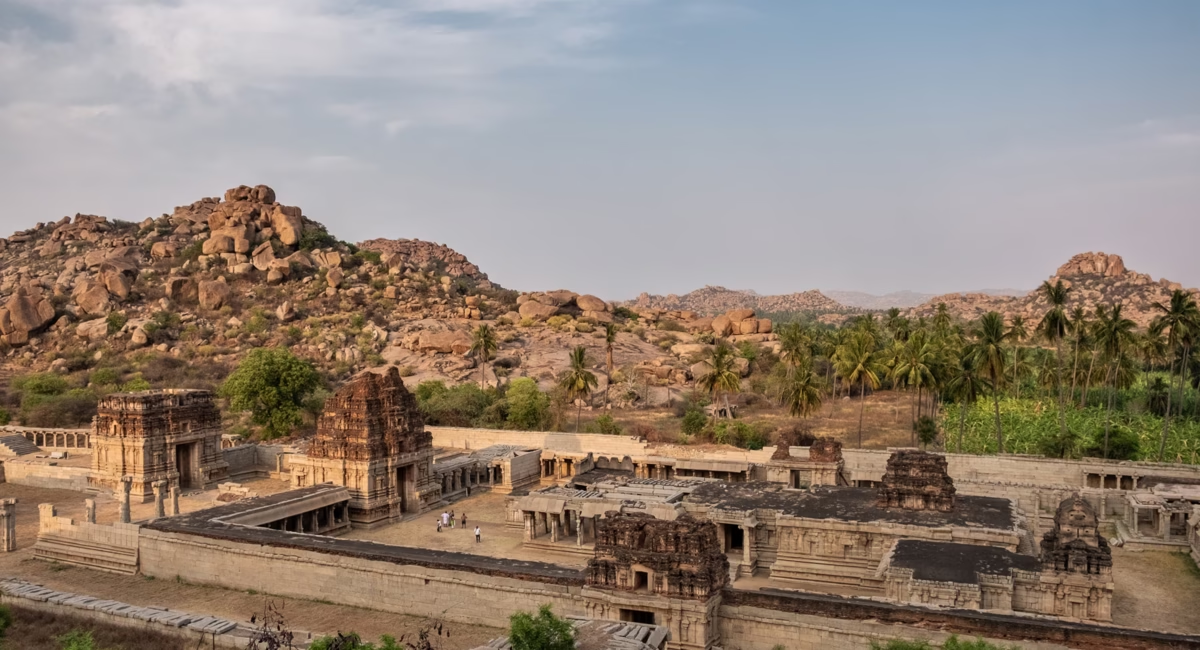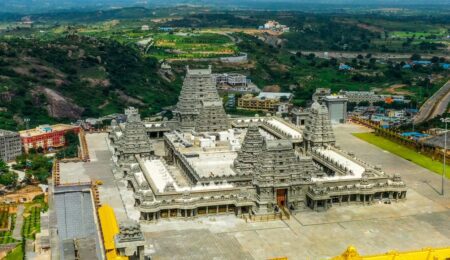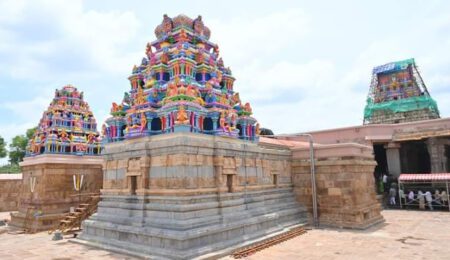Hampi India: A Complete Travel Guide to the Ancient City of Ruins
Introduction: The Timeless Allure of Hampi India
Hampi, located in northern Karnataka, is one of India’s most captivating heritage destinations. Recognized as a UNESCO World Heritage Site, this ancient city was once the thriving capital of the Vijayanagara Empire, one of the most powerful Hindu kingdoms in South India. Today, Hampi is a mesmerizing blend of myth, history, and surreal landscapes where giant boulders cradle centuries-old temples and legends echo through stone corridors.
Whether you’re a solo traveler seeking spiritual depth, a photographer chasing golden light, or a history buff tracing dynasties, Hampi offers a journey unlike any other.
Historical Background: The Rise and Fall of Vijayanagara
Origins and Mythological Roots
Hampi’s history predates the Vijayanagara Empire. Archaeological evidence suggests settlements here as early as the 1st century CE. In Hindu mythology, Hampi is believed to be Kishkindha, the monkey kingdom from the epic Ramayana, where Lord Rama met Hanuman and Sugriva.
The Vijayanagara Empire
Founded in 1336 CE by brothers Harihara and Bukka, the Vijayanagara Empire rose to become a beacon of Hindu culture, art, and military prowess. Under rulers like Krishnadevaraya, Hampi flourished with grand temples, bustling markets, and sophisticated urban planning.
At its peak, Hampi was one of the largest cities in the world, with over half a million inhabitants. It attracted traders from Persia, Portugal, and Arabia, and was known for its wealth, tolerance, and architectural brilliance.
The Fall of Hampi
In 1565, the empire fell after the Battle of Talikota, where a coalition of Deccan Sultanates defeated Vijayanagara forces. Hampi was pillaged, its temples desecrated, and its glory buried under centuries of silence. What remains today are hauntingly beautiful ruins that whisper stories of a lost civilization.
Architecture & Temples: A Living Museum of Stone
Hampi’s architecture is a masterclass in Dravidian design, infused with spiritual symbolism and royal grandeur. Here are the most iconic places to visit in Hampi:
Virupaksha Temple
- The oldest functioning temple in Hampi, dedicated to Lord Shiva.
- Features a towering gopuram (entrance tower), intricate carvings, and a sanctum that dates back to the 7th century.
- Inside, a fascinating pinhole camera effect projects the temple’s tower onto a wall in reverse.
Vittala Temple and Stone Chariot
- Known for its musical pillars that emit different notes when tapped.
- The Stone Chariot, carved from granite, is a national icon featured on Indian currency.
- The temple complex includes ornate halls, mandapas, and sculptures that showcase the zenith of Vijayanagara artistry.
Lotus Mahal
- A graceful structure with Islamic-style arches and Hindu ornamentation, believed to be a royal retreat for women.
- Its symmetrical design and lotus-like domes make it a favorite among photographers.
Elephant Stables
- A row of eleven domed chambers that once housed royal elephants.
- Each stable is uniquely designed, reflecting Indo-Islamic architectural fusion.
Hemakuta Hill Temples
- A cluster of ancient shrines offering panoramic views of Hampi.
- Ideal for sunrise photography and quiet reflection.
Achyutaraya Temple
- Located near the Tungabhadra River, this temple is dedicated to Lord Vishnu.
- Surrounded by a market street, it offers insight into Hampi’s commercial past.
Hazara Rama Temple
- Known for its bas-reliefs depicting scenes from the Ramayana.
- Once the private temple of the royal family.
Cultural & Religious Significance
Hampi is not just a historical site—it’s a living spiritual landscape.
Festivals in Hampi
- Hampi Utsav (November): A three-day cultural extravaganza featuring dance performances, music concerts, puppet shows, and processions.
- Purandara Dasa Aradhana (January–February): Celebrates the birth anniversary of the saint-composer at Vittala Temple with devotional music.
Mythological Connections
- Anjaneya Hill is believed to be the birthplace of Lord Hanuman.
- The region is dotted with references to the Ramayana, including Sugriva’s cave and the place where Rama met Hanuman.
Things to Do in Hampi
Beyond temple-hopping, Hampi offers a range of immersive experiences:
- Coracle Rides: Drift across the Tungabhadra River in traditional round boats.
- Boulder Climbing: Hampi is a global hotspot for rock climbers, with hundreds of granite formations.
- Cycling Tours: Rent a bicycle and explore the ruins at your own pace.
- Sunset Points: Watch the sun dip behind the boulders from Matanga Hill, Hemakuta Hill, or Malyavanta Raghunatha Temple.
- Local Markets: Shop for banana fiber crafts, handmade jewelry, and spiritual souvenirs.
Best Time to Visit Hampi
Seasonal Guide
| Season | Months | Weather & Experience |
|---|---|---|
| Winter | Oct–Feb | Cool, pleasant, ideal for sightseeing |
| Summer | Mar–June | Hot and dry, best avoided |
| Monsoon | July–Sept | Lush landscapes but slippery terrain |
Best time to visit Hampi: October to February, when the weather is pleasant and festivals are in full swing.
How to Reach Hampi
By Train
- Nearest station: Hospet Junction (13 km from Hampi).
- Regular trains from Bangalore, Hyderabad, Goa, and Mumbai.
By Road
- Well-connected via buses and taxis from Hospet, Hubli, and Bangalore.
- Self-drive from Bangalore (~6 hours) offers scenic countryside views.
By Air
- Nearest airport: Hubli Airport (~160 km).
- Bangalore International Airport (~350 km) offers better connectivity.
Accommodation Options
Hampi offers a range of stays to suit every budget:
Luxury
- Evolve Back Kamalapura Palace – Heritage-style resort with spa, pool, and curated experiences.
- Heritage Resort Hampi – Elegant rooms, lush gardens, and proximity to key sites.
Mid-Range
- Clarks Inn, Hampi – Comfortable rooms with modern amenities.
- Hotel Malligi, Hospet – Popular among families and groups.
Budget
- Shanthi Guest House – Riverside cottages and laid-back vibes.
- Padma Guest House – Clean rooms and friendly service near Virupaksha Temple.
Local Cuisine
Hampi’s food scene is simple yet flavorful:
- Kharabath and Upma – Popular breakfast dishes.
- Ragi Mudde – Finger millet balls served with spicy sambar.
- South Indian Thali – A complete meal with rice, sambar, rasam, curd, and vegetables.
- Banana Leaf Meals – Traditional and eco-friendly.
- International Cafés – Try Mango Tree Café or Laughing Buddha for Israeli, Italian, and fusion dishes.
Photography Tips & Scenic Spots
- Golden Hour: Early morning and late afternoon light enhances temple textures.
- Matanga Hill: Best for panoramic shots of Hampi’s landscape.
- Virupaksha Temple: Capture the gopuram with pilgrims for storytelling depth.
- Lotus Mahal at Dusk: Soft shadows and symmetry make for striking compositions.
- Tungabhadra River: Reflections and coracle rides offer dynamic frames.
Travel Tips & Safety Advice
- Footwear: Wear comfortable shoes for walking on uneven terrain.
- Hydration: Carry water, especially in summer months.
- Local Guides: Hire certified guides for deeper insights.
- Respect Temples: Dress modestly and follow local customs.
- Connectivity: Mobile networks may be patchy; download maps offline.
Nearby Attractions
Extend your trip with visits to these heritage gems:
- Badami: Rock-cut cave temples and sandstone cliffs.
- Pattadakal: UNESCO site with Chalukyan architecture.
- Aihole: Known as the cradle of Hindu temple architecture.
- Daroji Bear Sanctuary: Spot sloth bears in their natural habitat.
Frequently Asked Questions (FAQs)
Q: Is Hampi safe for solo travelers? Yes, Hampi is generally safe for solo travelers, including women. The local community is welcoming, and most areas are well-frequented by tourists. However, avoid isolated spots after dark and always inform someone of your itinerary.
Q: How many days are enough to explore Hampi?
A minimum of 3 days is recommended to explore the major temples, ruins, and nearby attractions. If you’re interested in photography, bouldering, or attending a festival, consider extending your stay to 5 days.
Q: Are guides available at Hampi?
Yes, certified local guides are available at key sites like Virupaksha Temple and Vittala Temple. Hiring a guide enhances your experience with historical context, legends, and architectural insights.
Q: Is there an entry fee for monuments in Hampi?
Yes, some monuments like Vittala Temple and Lotus Mahal require an entry ticket. The Hampi Archaeological Site Pass covers multiple attractions and can be purchased at designated counters.
Q: Can I visit Hampi during the monsoon?
While the monsoon (July–September) brings lush greenery and dramatic skies, it also makes some paths slippery and less accessible. If you enjoy off-season travel and don’t mind occasional showers, it can be a magical time to visit.
Q: Is photography allowed inside temples?
Photography is allowed in most outdoor areas and temple complexes. However, inside sanctums and during rituals, it’s best to ask permission or follow posted guidelines.
Conclusion: Why Hampi Should Be on Every Traveler’s Bucket List
Hampi is not just a destination it’s a portal into India’s spiritual and architectural soul. From the rhythmic chants at Virupaksha Temple to the silent grandeur of the Stone Chariot, every corner of Hampi tells a story. It’s a place where mythology meets history, where ruins breathe life, and where travelers find both adventure and introspection.
Whether you’re drawn by its UNESCO status, its epic legends, or its sheer visual drama, Hampi promises an experience that lingers long after you’ve left its sun-drenched stones behind.




Leave a Comment